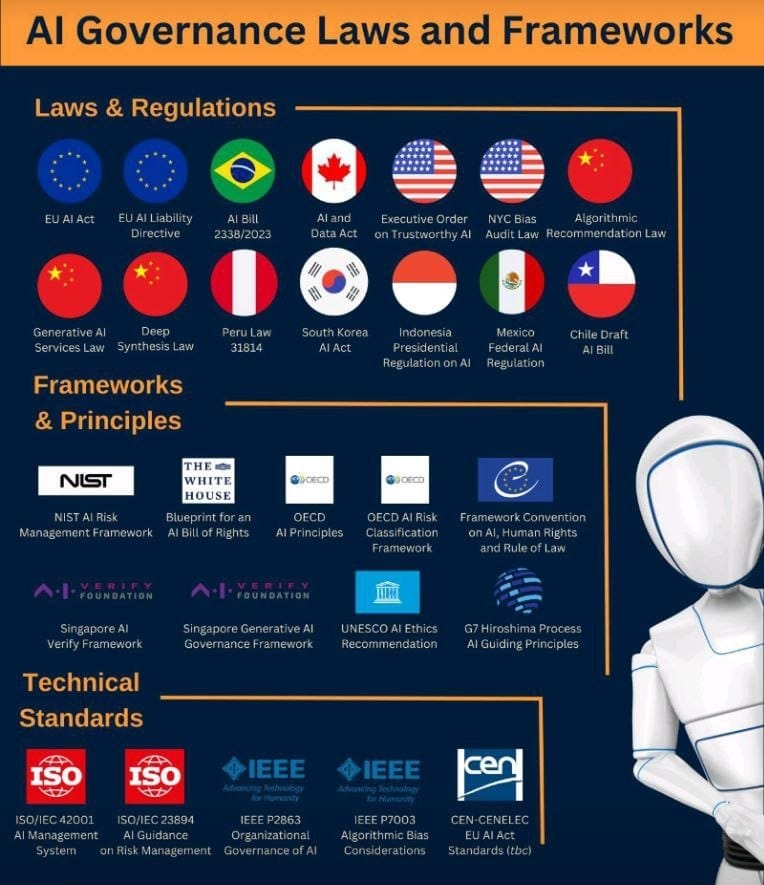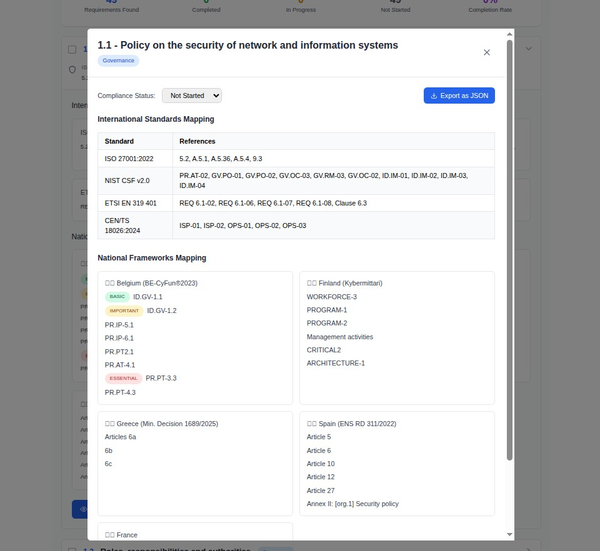U.S. State-Level AI Laws Surge: Navigating Colorado, Texas, and California’s Divergent Frameworks

As federal AI regulation stalls, states are racing to fill the gap with laws targeting algorithmic bias, transparency, and accountability. By February 2025, 14 states have introduced AI-specific legislation, with Colorado, Texas, and California leading divergent approaches. This guide analyzes their frameworks, compliance requirements, and strategies for multi-state operations.

Colorado AI Act: The Risk-Based Blueprint
Scope and Key Requirements
Effective February 1, 2026, Colorado’s AI Act (SB 24-205) focuses on high-risk AI systems influencing “consequential decisions” in:
- Employment (hiring, promotions)
- Healthcare (diagnostics, treatment plans)
- Education (admissions, scholarships)
- Financial services (loan approvals)
Algorithmic discrimination is defined as unlawful bias based on protected traits (race, gender, disability, etc.)[1][8][15].
Compliance Checklist
- Impact Assessments: Annual evaluations of AI systems for bias risks, mitigation measures, and performance metrics[1][8].
- Transparency Notices:
- Disclose AI use to consumers before interactions.
- Provide explanations for adverse decisions (e.g., denied loans)[7][12].
- Risk Management: Implement policies to monitor and address bias, including third-party vendor audits[1][15].
- Reporting: Notify the Attorney General within 90 days of discovering algorithmic discrimination[8][16].
Penalties: Up to $20,000 per violation; $50,000 for offenses affecting seniors[1][16].

Texas TRAIGA: Expanding Obligations Across Industries
Broadened Definitions and Requirements
The Texas Responsible AI Governance Act (HB 1709), effective September 1, 2025, casts a wider net:
- High-risk AI: Systems that are a “contributing factor” (not just substantial) to decisions impacting:
- Financial services (credit scoring, fraud detection)
- Healthcare (patient triage, insurance approvals)
- Criminal justice (risk assessments)[5][9][25].
- New Roles:
- Distributors must ensure AI systems comply with TRAIGA before market release[5][29].
- Deployers (e.g., banks, insurers) must conduct semi-annual audits and human oversight for AI-driven decisions[6][25].
Enforcement and Penalties
- AI Council: A 10-member body overseeing rulemaking and investigations[10][27].
- Fines: Up to $200,000 per violation; daily penalties of $2,000–$40,000 for non-compliance[10][27].
- Banned Uses: Social scoring, emotion recognition without consent, and deepfakes[5][9].

California’s CCPA Amendments: Targeting Algorithmic Bias
2026 Updates to the California Consumer Privacy Act
Proposed amendments focus on credit scoring and financial services:
- Bias Audits: Annual assessments of AI models for racial, gender, or socioeconomic disparities[15][18].
- Consumer Rights:
- Opt-out of AI-driven credit decisions.
- Request human review of adverse outcomes[20][22].
- Transparency: Disclose data sources, model logic, and risk factors in credit scoring[15][20].
Sectors Affected:
- Lending institutions
- Insurers using AI for premium calculations
- Employers leveraging AI in hiring[20][22].
Penalties: Align with CCPA’s $7,500 per intentional violation[1][20].

Comparative Analysis: Key Differences
| Aspect | Colorado | Texas | California |
|---|---|---|---|
| Risk Threshold | “Substantial factor” in decisions | “Contributing factor” | Sector-specific (credit) |
| Audit Frequency | Annual | Semi-annual | Annual for credit models |
| Banned Uses | None | Social scoring, deepfakes | None |
| Penalties | $20K/violation | Up to $200K/violation | $7.5K/violation |
| Enforcement | Attorney General | AI Council + AG | Privacy Protection Agency |

Compliance Strategies for Multi-State Operations
1. Unified Risk Frameworks
- Adopt NIST AI RMF 2.0 to map systems against state-specific thresholds[1][24].
- Use tools like OneTrust or IBM Watson to automate impact assessments[1][10].
2. Third-Party Audits
- Conduct vendor audits biannually (aligned with Texas TRAIGA)[6][25].
- Include algorithmic bias testing in contracts (e.g., 23% of lenders now mandate this)[22][24].
3. Transparency Architecture
- Deploy granular consent banners disclosing AI use:
- Colorado: Pre-decision notices[7][12].
- California: Opt-out mechanisms for credit decisions[20][22].
4. Governance Committees
- Establish cross-functional AI boards to oversee compliance (required in Texas for high-risk systems)[10][25].

Emerging Trends for 2025–2026
- Cross-State Liability: 63% of companies face conflicting requirements; Colorado’s “substantial factor” vs. Texas’s “contributing factor” definitions[9][25].
- Insurance Industry Impact:
- Texas TRAIGA conflicts with actuarial standards, risking $1.2B in compliance costs for insurers[6][31].
- Federal Preemption Risks: Draft bills in Congress (e.g., AI Accountability Act) may override state laws by 2027[16][27].
Conclusion
Colorado’s risk-based model, Texas’s expansive oversight, and California’s sector-specific rules create a fragmented compliance landscape. Organizations must prioritize modular AI governance frameworks, invest in audit automation, and monitor legislative updates. With penalties exceeding $200K per violation in Texas and algorithmic bias lawsuits rising 140% YoY, proactive adaptation is no longer optional—it’s a strategic imperative.
Citations:
[1] https://ppl-ai-file-upload.s3.amazonaws.com/web/direct-files/748221/dbb70fd2-5ebe-4275-8603-20f5848f655f/paste.txt
[2] https://hallrender.com/2025/01/24/colorado-artificial-intelligence-act-what-employers-need-to-know/
[3] https://atlan.com/know/ai-readiness/colorado-ai-act/
[4] https://www.insideprivacy.com/artificial-intelligence/texas-legislature-to-consider-sweeping-ai-legislation-in-2025/
[5] https://www.insideglobaltech.com/2024/11/13/texas-legislature-to-consider-sweeping-ai-legislation-in-2025/
[6] https://www.jdsupra.com/legalnews/texas-legislature-considering-sweeping-6866402/
[7] https://www.shb.com/-/media/files/professionals/h/hansenjosh/ahlaconnectionsjanfeb25hansen.pdf?rev=3cc29a9d3ef44cef8114dc6afcbe99fc&hash=20F9AB17E4C0C55CFDF19D487C837F47
[8] https://www.naag.org/attorney-general-journal/a-deep-dive-into-colorados-artificial-intelligence-act/
[9] https://www.globalpolicywatch.com/2024/11/texas-legislature-to-consider-sweeping-ai-legislation-in-2025/
[10] https://www.lumenova.ai/blog/texas-responsible-ai-governance-act-breakdown/
[11] https://www.dwt.com/blogs/artificial-intelligence-law-advisor/2024/05/colorado-enacts-first-risk-based-ai-regulation-law
[12] https://cdt.org/insights/faq-on-colorados-consumer-artificial-intelligence-act-sb-24-205/
[13] https://www.texaspolicyresearch.com/texas-lawmakers-face-decision-on-comprehensive-ai-regulation/
[14] https://news.bloomberglaw.com/us-law-week/overbroad-texas-ai-bill-threatens-innovation-and-economic-growth
[15] https://www.skadden.com/insights/publications/2024/06/colorados-landmark-ai-act
[16] https://www.whitecase.com/insight-alert/newly-passed-colorado-ai-act-will-impose-obligations-developers-and-deployers-high
[17] https://coloradosun.com/2025/02/11/opinion-colorado-ai-act-revamp-review/
[18] https://leg.colorado.gov/bills/sb24-205
[19] https://www.venable.com/insights/publications/ip-quick-bytes/disclosure-requirements-under-the-colorado
[20] https://www.littler.com/publication-press/publication/what-does-2025-artificial-intelligence-legislative-and-regulatory
[21] https://www.foley.com/insights/publications/2025/02/the-colorado-ai-act-implications-for-health-care-providers/
[22] https://www.credo.ai/blog/understanding-colorados-ai-act-key-points-for-enterprises-adopting-high-risk-ai
[23] https://www.bakerdonelson.com/the-colorado-ai-act-shuffle-one-step-forward-two-steps-back
[24] https://kofirm.com/artificial-intelligence-regulatory-overview-practical-considerations
[25] https://www.fultonjeang.com/post/the-new-texas-ai-bill-traiga-could-be-smarter
[26] https://www.hyperdimensional.co/p/texas-plows-ahead
[27] https://www.forbes.com/sites/jamesbroughel/2025/01/26/texass-left-turn-on-ai-regulation/
[28] https://blog.cisive.com/quarterly-compliance-update-winter-2025
[29] https://www.mba.org/docs/default-source/policy/state-relations/draft_texas-ai_10.28.24.pdf?sfvrsn=9f83267e_1
[30] https://www.klgates.com/The-Texas-Responsible-AI-Governance-Act-and-Its-Potential-Impact-on-Employers-1-13-2025
[31] https://www.mitchellwilliamslaw.com/texas-legislature-considering-sweeping-ai-bill-impact-on-insurance-industry
[32] https://www.workforcebulletin.com/states-ring-in-the-new-year-with-proposed-ai-legislation
[33] https://www.transparencycoalition.ai/news/analysis-whats-in-traiga-the-texas-responsible-ai-governance-act
[34] https://www.orrick.com/en/Insights/2025/01/The-Texas-Responsible-AI-Governance-Act-5-Things-to-Know
[35] https://www.ailawandpolicy.com/2024/12/texas-considers-comprehensive-ai-bill/
[36] https://www.bclplaw.com/en-US/events-insights-news/us-state-by-state-artificial-intelligence-legislation-snapshot.html
[37] https://www.whitecase.com/insight-alert/data-privacy-update-2025
[38] https://advocacy.calchamber.com/policy/issues/automated-decision-making-tools/
[39] https://resecon.com/wp-content/uploads/2025/01/Resolution-Economics-Public-Comments-on-CCPA-Regulatory-Updates.pdf
[40] https://calmatters.org/health/2024/12/medical-debt-credit-report-new-laws-2025/
[41] https://www.hklaw.com/en/insights/publications/2025/01/california-attorney-general-issues-new-legal-advisories
[42] https://www.bytebacklaw.com/2024/08/california-privacy-and-ai-legislation-update-august-26-2024/
[43] https://cppa.ca.gov/regulations/ccpa_updates.html
[44] https://2b-advice.com/en/2024/11/13/california-consumer-privacy-act-ccpa-ki-regulation-adopted/
[45] https://epic.org/tracking-real-algorithmic-harms-in-california-as-ccpa-obligations-near/
[46] https://www.equifax.com/newsroom/all-news/-/story/plan-now-for-complying-with-the-ccpa/
[47] https://cppa.ca.gov/meetings/materials/20240716_item7_ab_2930.pdf
[48] https://afsaonline.org/wp-content/uploads/2025/01/AFSA-comment-letter-CCPA-proposed-rules.pdf
[49] https://datainnovation.org/2025/01/texass-ai-law-wont-deliver-the-accountability-it-promises/
[50] https://www.bakermckenzie.com/-/media/files/people/newman-bradford/ca-legislator-to-revive-ai-anti-discrimination-bill-in-2025.pdf
[51] https://www.theemployerreport.com/2025/02/passage-of-reintroduced-california-ai-bill-would-result-in-onerous-new-compliance-obligations-for-covered-employers/
[52] https://cppa.ca.gov/announcements/2024/20241217.html
[53] https://oag.ca.gov/system/files/attachments/press-docs/Legal Advisory - Application of Existing CA Laws to Artificial Intelligence.pdf
[54] https://www.callaborlaw.com/entry/top-five-2025-california-privacy-alerts-for-california-employers
[55] https://library.nclc.org/article/new-consumer-law-rights-taking-effect-2025
[56] https://www.hunton.com/privacy-and-information-security-law/california-amends-ccpa-to-cover-neural-data-and-clarify-scope-of-personal-information











